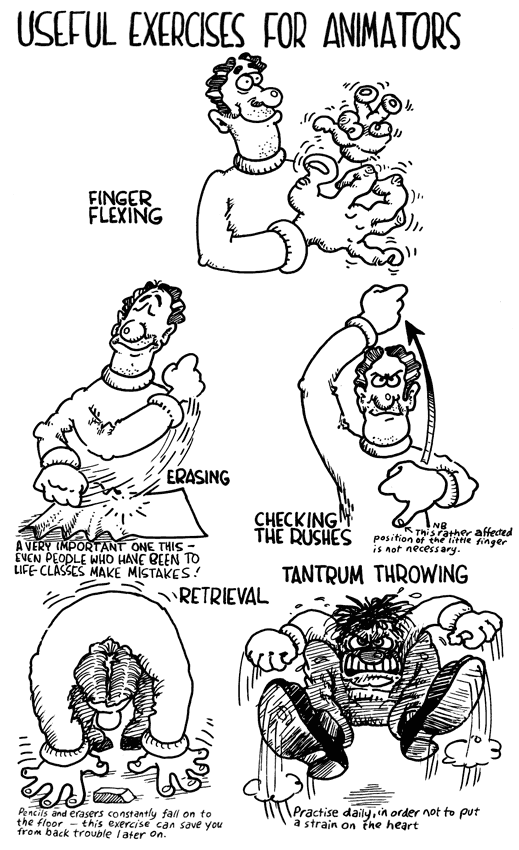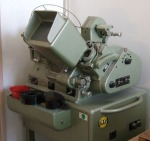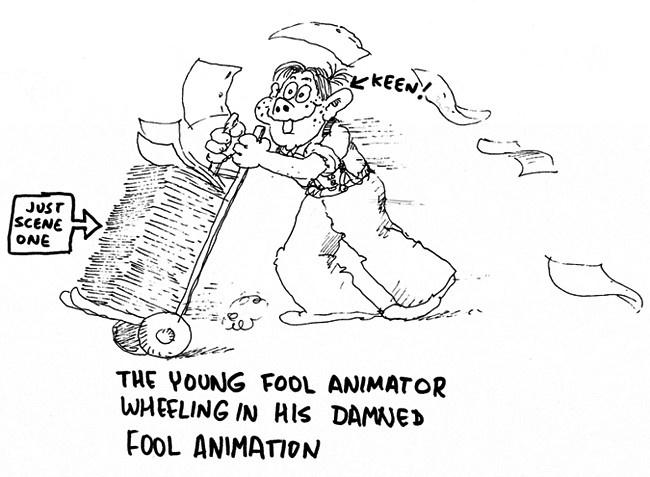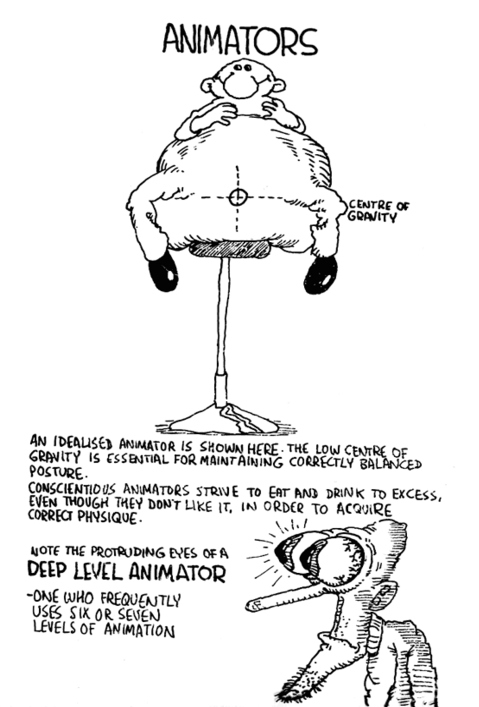page 2

Youngsters reading this will be puzzled by the item above labelled "checking the rushes". This is how we would look at film when someone else was hogging the Moviola (probably some busybody editor). The Moviola was a machine that came from Hollywood at great expense (I bought mine for £3,000) and appeared to be designed expressly for the purpose of ripping valuable movie film into spaghetti-like shreds. It sometimes could be persuaded to show moving images on a screen not much bigger than a present-day mobile phone's screen, which made it very difficult for more than one person to view the film at a time. The motor of the Moviola was so noisy, by the way, that it drowned any soundtrack being played.
For a time after I had bought my Moviola, I could have sold it at a profit. Now, it remains in my workroom as a large green piece of junk that I would have to pay to have removed. Hooray for technology! What will be tomorrow's junk?
Museum Piece

My old Moviola as it is now, skulking in the corner of the room, dreaming of the good old days.

"Full animation" is a term that others would call "quality animation". At Bob Godfrey Films, we didn't trust people who used too many drawings in their animation, (that is, animated well).
Spud Houston was older than most of the others working at Bob's studio and remained blithely unaware of the ethos around her there. She hailed originally from New Zealand and had been present at the very start of the UK animation business in the 1930s (I believe she worked on the famous Anthony Gross film "La Joie de Vivre", 1934). Spud was one of the nicest people I have ever met, something that Bob found a little difficult to deal with, being rather abrasive himself (but also very funny) and surrounded by younger surlier people like me. The other thing that non-plussed him was that Spud only knew how to animate properly, not in the crude limited wobbly style of the rest of us.
I once saw Bob going through a scene of Spud's, systematically throwing at least half of her drawings on to the floor. Never mind. Spud was so nice that she would have forgiven him.

We were somewhat stymied in the pre-computer days by having to limit the number of levels of animation available in a scene due to the increasing opacity that occurs when you try to build up too many layers of paper on a lightbox. The good news with computer animation is that you can have as many levels as you want.
The bad news is that by having lots of levels, the planning of the animation will become exponentially more complex, you will become hopelessly confused and in all likelihood suicidal.
A hundred years ago, the pioneering genius Winsor McCay only used one level in his animation and it didn't harm his reputation.
Please navigate to different pages in "Daze of 84" by using the header bar at the top of each page.
